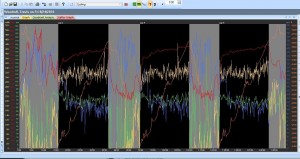Goal Development
At the onset of a new season it’s largely important to develop a new set of goals or at least evaluate the ones that you’re currently working with. Your biggest goals are often quick to come to mind and might be as simple as: “win race X” or “podium at the championship race”. Having the big goal is an important start to the goal setting process, but without related intermediate goals that are objective and measurable, the big goal will be little more than wishful thinking. Intermediate goals that are clearly defined will help you towards successful completion of your big goals. For example – in order to be ready to “win race X” an intermediate goal could be to further increase the volume of training spent developing your power output at threshold intensity by 10%. Amongst other intermediate goals, this is one that’ll certainly help you be in a position to “win race X” when it really gets down to crunch time during the race. It’s a good reminder that when you work towards your goals the process ought to be a positive experience; if and when that big race is won, it’ll simply be ‘sprinkles on top’ of something that was already great. Goals help to set course for gratifying experiences and are they are not simply means to an end.
It’s hard to fully understand what it takes to accomplish our biggest goals, and that’s 100% okay just as long as such knowledge is actively sought out. The Momentum Endurance philosophy encourages you to take an active role in your own development. When you understand ‘what it takes’ you’ll have the best opportunity to accomplish your goals, training with full confidence. Getting to this situation is the goal that Momentum Endurance has for every coach/athlete relationship. There’s nothing more rewarding than helping an athlete to better understand their goals, assisting them with their preparations, and then seeing them genuinely maximizing their opportunities to go for it.
Write down your big goals and get them on paper. Next, you’ll want to note ‘what it takes’ to accomplish such goals. Whether you understand a little or a lot about what will be required, talking with your coach will help you to better understand how you might get yourself there. With the appropriate intermediate goals set in place and a training plan developed accordingly, you can take confidence in knowing that you’re preparing most effectively.

